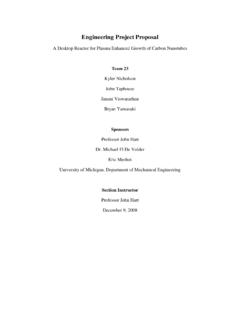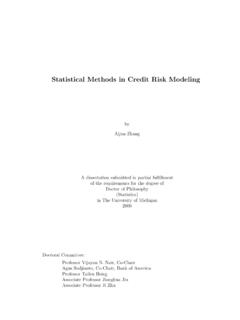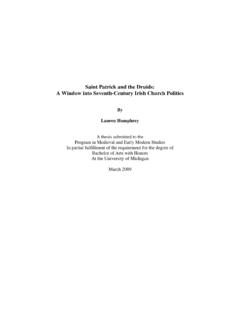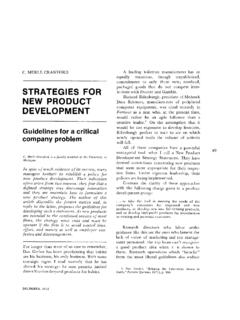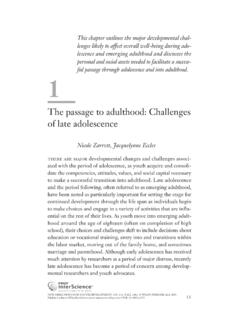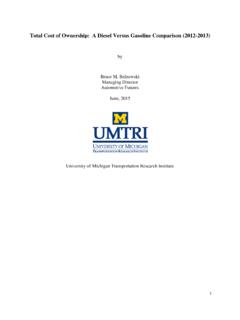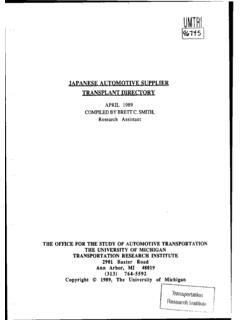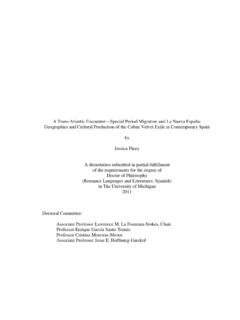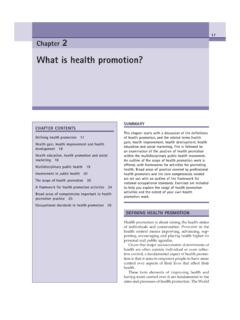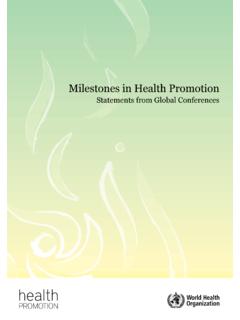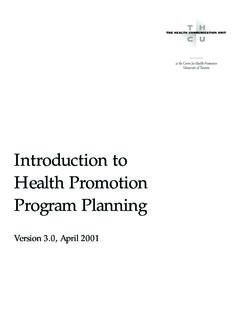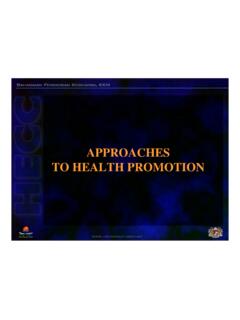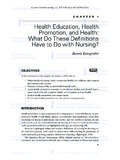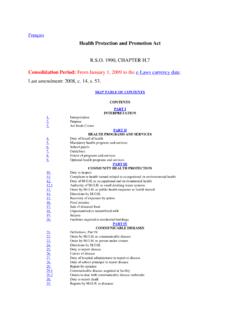Transcription of The Health Promotion Model - University of Michigan
1 The Health Promotion Model Manual Nola Pender, PhD, RN, FAAN Professor Emerita University of Michigan Distinguished Professor Loyola University Chicago Website: E-mail: 1 Table of Contents Overview of Health Promotion Model (HPM) 2 Key Concepts in Nursing Defined as a Basis for the Health Promotion Model 3 Definitions of Components of Model 4 HPM Assumptions 5 HPM Theoretical Propositions 5 Clinical Assessment for Health Promotion Plan Increasing Physical Activity 7
2 Clincal Assessment for Health Promotion Plan Improving Nutrition 9 Interventions to Address Influences on Health Behaviors Increasing Physical Activity 12 Instruments to Measure HPM Variables 13 Psychometric Properties of Sample Instruments 14 Pender and Colleagues Publications 15 Lusk and Colleagues Publications 17 2 Overview of Health Promotion Model Purpose.
3 Assist nurses in understanding the major determinants of Health behaviors as a basis for behavioral counseling to promote healthy lifestyles History: First appeared in nursing literature in 1982 Model revised in 1996 based on changing theoretical perspectives and empirical findings Research: Studies on the Model have been conducted over a period of 27 years Philosophical Roots: Reciprocal Interaction World View in which humans are viewed holistically, but parts can be studied in the context of the whole. Human beings interact with their environment and shape it to meet their needs and goals.
4 Theoretical Roots: Expectancy value theory Individuals engage in actions to achieve goals that are perceived as possible and that result in valued outcomes. Social cognitive theory Thoughts, behavior, and environment interact. For people to alter how they behave, they must alter how they think Brief Description: The Model identifies background factors that influence Health behavior.
5 However, the central focus of the Model is on eight beliefs that can be assessed by the nurse. These eight beliefs are critical points for nursing intervention. Using the Model and working collaboratively with the patient/client, the nurse can assist the client in changing behaviors to achieve a healthy lifestyle. 3 Key Concepts in Nursing Defined as a Basis for the Health Promotion Model Person is a biopsychosocial organism that is partially shaped by the environment but also seeks to create an environment in which inherent and acquired human potential can be fully expressed.
6 Thus, the relationship between person and environment is reciprocal. Individual characteristics as well as life experiences shape behaviors including Health behaviors. Environment is the social, cultural and physical context in which the life course unfolds. The environment can be manipulated by the individual to create a positive context of cues and facilitators for Health -enhancing behaviors. Nursing is collaboration with individuals, families, and communities to create the most favorable conditions for the expression of optimal Health and high-level well-being. Health in reference to the individual is defined as the actualization of inherent and acquired human potential through goal-directed behavior, competent self-care, and satisfying relationships with others, while adjustments are made as needed to maintain structural integrity and harmony with relevant environments.
7 Health is an evolving life experience. There are definitions for family Health and community Health that have been proposed by other authors. Illnesses are discrete events throughout the life span of either short (acute) or long (chronic) duration that can hinder or facilitate one s continuing quest for Health . 4 Definitions of Components of Model Individual Characteristics and Experiences Prior related behavior frequency of the same or similar Health behavior in the past Personal factors (biological, psychological, sociocultural) general characteristics of the individual that influence Health behavior such as age, personality structure, race, ethnicity, and socioeconomic status.
8 Behavior-Specific Cognitions and Affect Perceived benefits of action perceptions of the positive or reinforcing consequences of undertaking a Health behavior Perceived barriers to action perceptions of the blocks, hurdles, and personal costs of undertaking a Health behavior Perceived self-efficacy judgment of personal capability to organize and execute a particular Health behavior; self-confidence in performing the Health behavior successfully Activity-related affect subjective feeling states or emotions occurring prior to, during and following a specific Health behavior Interpersonal influences (family, peers, providers).
9 Norms, social support, role models perceptions concerning the behaviors, beliefs, or attitudes of relevant others in regard to engaging in a specific Health behavior Situational influences (options, demand characteristics, aesthetics) perceptions of the compatibility of life context or the environment with engaging in a specific Health behavior Commitment to a plan of action -- intention to carry out a particular Health behavior including the identification of specific strategies to do so successfully Immediate competing demands and preferences alternative behaviors that intrude into consciousness as possible courses of action just prior to the intended occurrence of a planned Health behavior Behavioral Outcome- Health Promoting Behavior Health promoting behavior the desired behavioral end point or outcome of Health decision-making
10 And preparation for action 5 HPM Assumptions The HPM is based on the following assumptions, which reflect both nursing and behavioral science perspectives: 1. Persons seek to create conditions of living through which they can express their unique human Health potential. 2. Persons have the capacity for reflective self-awareness, including assessment of their own competencies. 3. Persons value growth in directions viewed as positive and attempt to achieve a personally acceptable balance between change and stability. 4. Individuals seek to actively regulate their own behavior. 5. Individuals in all their biopsychosocial complexity interact with the environment, progressively transforming the environment and being transformed over time.
